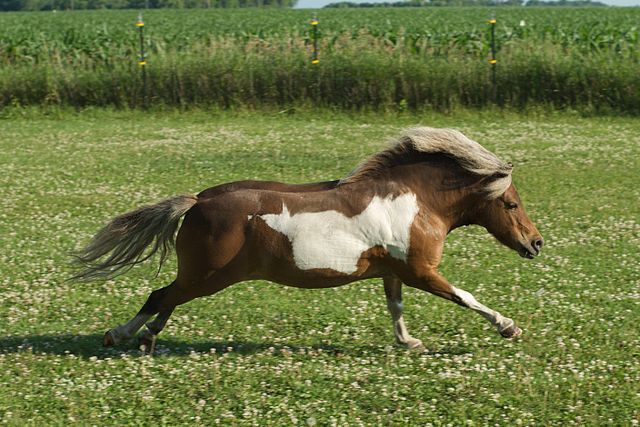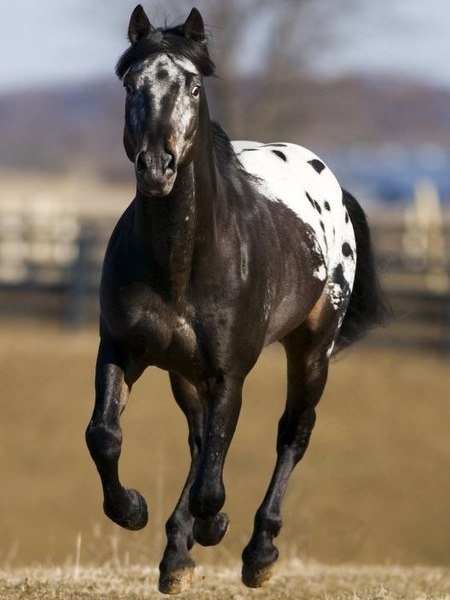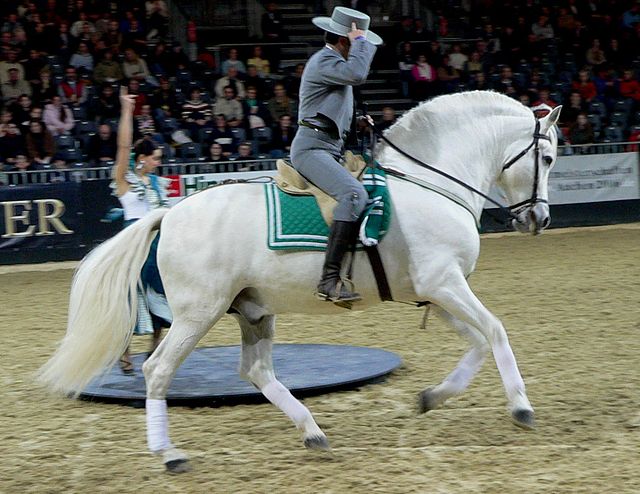The canter and gallop are variations on the fastest gait that can be performed by a horse or other equine. The canter is a controlled three-beat gait, while the gallop is a faster, four-beat variation of the same gait. It is a natural gait possessed by all horses, faster than most horses' trot, or ambling gaits. The gallop is the fastest gait of the horse, averaging about 40 to 48 kilometres per hour. The speed of the canter varies between 16 and 27 kilometres per hour depending on the length of the horse's stride. A variation of the canter, seen in western riding, is called a lope, and is generally quite slow, no more than 13–19 kilometres per hour (8–12 mph).
A horse and rider at the canter
A miniature horse at a gallop
The diagonal pair (in this case, right hind and left fore) is no longer in sync at the gallop.
The suspension phase, all four legs momentarily off the ground
Horses can use various gaits during locomotion across solid ground, either naturally or as a result of specialized training by humans.
An 1878 chronophotography sequence by Eadweard Muybridge of a horse in motion
The trot, a two-beat gait involving diagonal pairs of legs. The two legs with white stockings are off the ground.
The Fairman Rogers Four-in-Hand (1879–80) by Thomas Eakins, was the first painting to demonstrate precisely how horses move based on systematic photographic analysis. Eakins based these on Eadweard Muybridge's 1878 photographs of the trotter "Abe Edgington".
An Andalusian performing the canter. The left hind and right fore will land at the same moment, creating three beats in the stride. This horse is on the left lead, as the left rear and right fore are moving together, with the left hind leading the right hind. As the left fore lands, it will be in front of the right fore.








